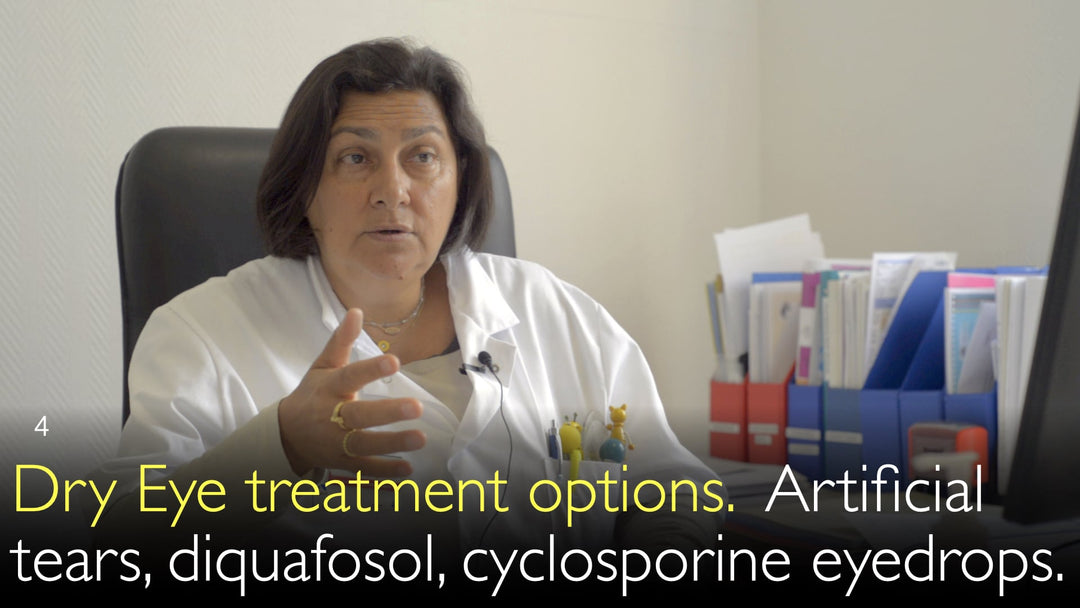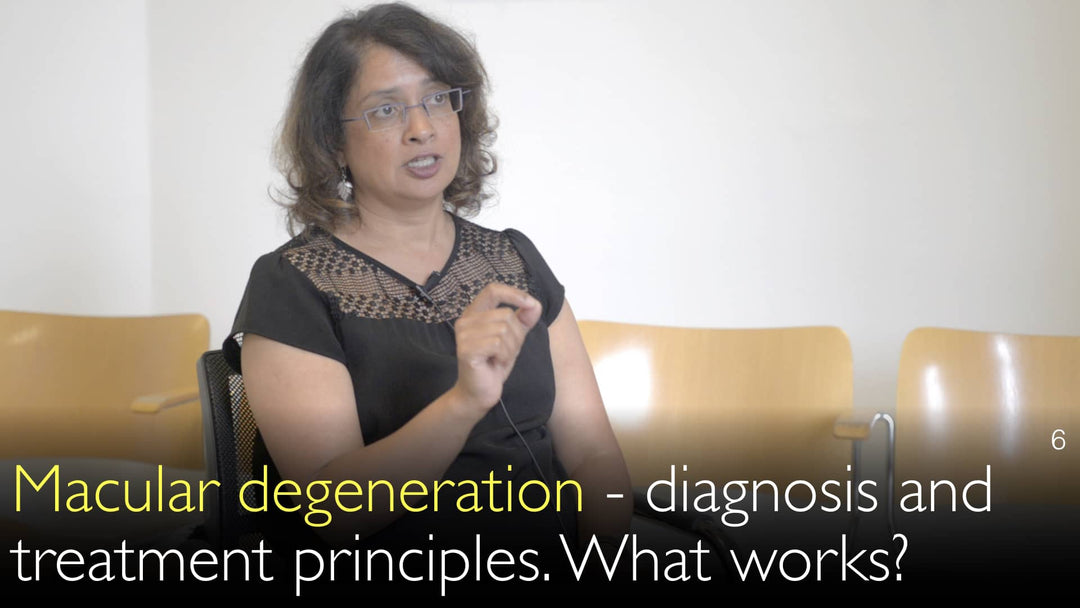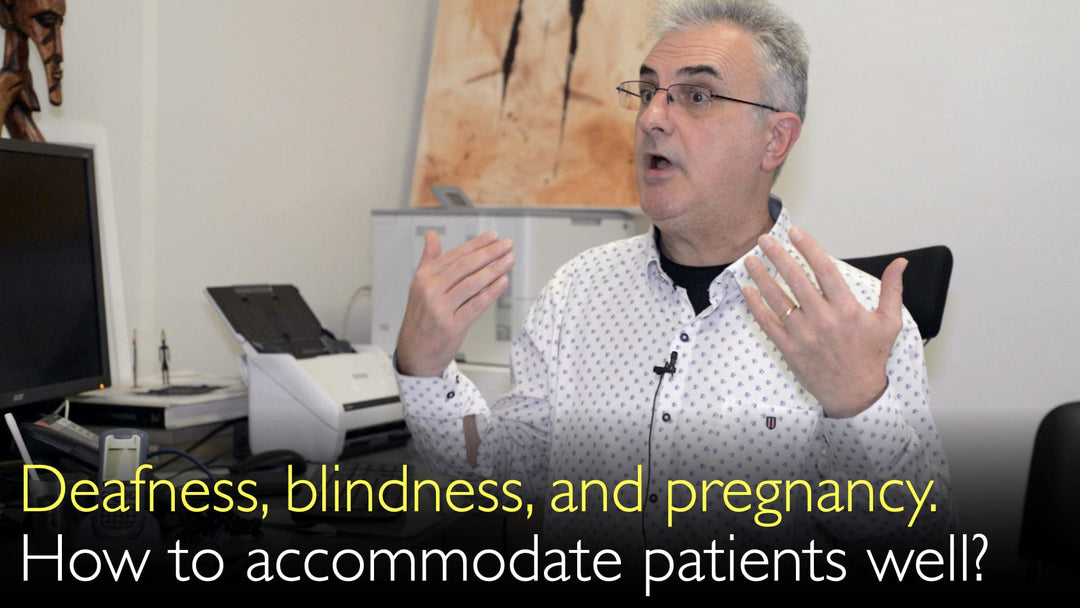Leading expert in ophthalmology and dry eye disease, Dr. Dominique Bremond-Gignac, MD, explains how chronic dry eye syndrome is a complex inflammatory condition requiring advanced treatments beyond basic artificial tears, detailing the roles of innovative anti-inflammatory cyclosporine eyedrops and other emerging therapies to effectively manage symptoms and protect ocular surface health.
Advanced Dry Eye Treatment Options: From Artificial Tears to Anti-Inflammatory Therapies
Jump To Section
- Understanding Dry Eye Syndrome
- Complications of Severe Dry Eye
- Artificial Tears: Complex Formulations
- Inflammation: A Key Dry Eye Component
- Cyclosporine Eyedrops Treatment
- Diquafosol Ophthalmic Solution
- Future Dry Eye Therapy Innovations
- Full Transcript
Understanding Dry Eye Syndrome
Dry eye syndrome is a very common and complex ocular surface disease characterized by significant variability in patient experience. As Dr. Dominique Bremond-Gignac, MD, explains, the severity of symptoms does not always correlate with the clinical signs of the disease. Some patients experience substantial impairment with only a mild form of dry eye, while others with severe dry eye may report minimal discomfort. This condition affects the entire ocular surface, including the cornea, leading to persistent symptoms that often drive patients to seek multiple ophthalmology opinions over many years in search of effective relief.
Complications of Severe Dry Eye
Severe dry eye disease can lead to serious complications that threaten vision and ocular health. Dr. Dominique Bremond-Gignac, MD, highlights that advanced dry eye conditions like Sjögren's syndrome present significant challenges for patients and clinicians. Dry eye also manifests in unusual clinical contexts, including graft-versus-host disease following transplants, leukemia, and other systemic conditions that affect tear production and quality. These complex presentations require specialized treatment approaches that address both the ocular surface damage and the underlying systemic inflammatory processes contributing to the dry eye condition.
Artificial Tears: Complex Formulations
Modern artificial tears represent sophisticated formulations designed to mimic natural tear film composition and function. According to Dr. Dominique Bremond-Gignac, MD, today's artificial tears contain complex associations of agents, including hyaluronic acid and other components that provide enhanced lubrication and protection for the ocular surface. These advanced formulations serve as foundational therapy for dry eye patients, offering temporary symptom relief while helping to maintain corneal integrity. The development of these complex artificial tear solutions represents significant progress in basic dry eye management, providing multiple options for patients with varying degrees of dryness severity.
Inflammation: A Key Dry Eye Component
The understanding of dry eye disease has evolved significantly with the recognition that inflammation plays a central role in its pathophysiology. Dr. Dominique Bremond-Gignac, MD, emphasizes that dry eye is not merely about dryness but involves significant inflammation of the ocular surface. This inflammatory component creates a vicious cycle where surface irritation triggers more inflammation, leading to further damage to tear-producing glands and ocular surface cells. Addressing this underlying inflammation has become a critical focus of modern dry eye treatment strategies, moving beyond simple lubrication to target the root causes of the disease process.
Cyclosporine Eyedrops Treatment
Cyclosporine eyedrops represent a significant advancement in dry eye therapy by specifically targeting the inflammatory component of the disease. Dr. Dominique Bremond-Gignac, MD, explains that these medications use a low concentration formulation different from those used for vernal conjunctivitis. Cyclosporine works as an immunomodulator, reducing inflammation on the ocular surface and potentially helping to restore normal tear production over time. While clinical studies demonstrating efficacy can be challenging due to the variable nature of dry eye disease, many patients experience substantial relief from their symptoms with cyclosporine treatment, making it an important option for those with chronic inflammatory dry eye.
Diquafosol Ophthalmic Solution
Diquafosol ophthalmic solution 3% (marketed as Diquas) represents another innovative approach to dry eye treatment, though its availability varies by region. As Dr. Dominique Bremond-Gignac, MD, notes, this medication is not currently available in Europe but represents an important area of development in dry eye therapy. Diquafosol works through a different mechanism than anti-inflammatory agents, functioning as a P2Y2 receptor agonist that stimulates both water and mucin secretion from ocular surface cells. This dual action helps address multiple components of dry eye disease by improving both the quantity and quality of the tear film.
Future Dry Eye Therapy Innovations
The field of dry eye treatment continues to evolve with ongoing research and development of new therapeutic options. Pharmaceutical companies are actively working on innovations in dry eye therapy, though Dr. Dominique Bremond-Gignac, MD, acknowledges the challenges in conducting clinical studies due to the complex and variable nature of the disease. Future directions include combination therapies that address multiple aspects of dry eye simultaneously, novel anti-inflammatory agents, and treatments that promote ocular surface regeneration. During his discussion with Dr. Anton Titov, MD, Dr. Bremond-Gignac emphasized the importance of patients understanding that chronic dry eye requires addressing underlying inflammation, not just supplementing tears, highlighting the need for continued education about advanced treatment options.
Full Transcript
Dr. Anton Titov, MD: "Dry eye" is a common eye problem. Patients usually experience dry eye symptoms for many years. They visit many eye doctors but often remain unsatisfied with therapy results. Then they come to another ophthalmologist and expect better results.
What causes "dry eye"? What are the complications of "dry eye"? What is the best treatment for "dry eye"? Are there any innovations in the field of dry eye therapy?
Dr. Dominique Bremond-Gignac, MD: Dry eye syndrome is a very interesting disease because it's a common disease. What characterizes dry eye diseases is that some patients are impaired with a very mild form of dry eye. Some other patients are not very much impaired with a very severe form of dry eye.
But the problem is because dry eye is affecting the ocular surface. It is affecting the cornea. And so the complications for a very severe form of the dry eye develop, like Sjogren syndrome.
And third, we need a really good treatment for dry eye. In children, dry eye syndrome also exists. And of course, there are unusual presentations.
You have dry eye syndrome also in graft-versus-host disease. Dry eye exists in, for instance, in leukemia, in organ transplants. Dry eye happens in all the situations that are so unusual.
But dry eye also needs really effective treatment. So we try to have innovation in dry eye therapy every day. Pharmaceutical companies work on that.
There are very common artificial tears. Today artificial tears are a very complex association of agents, and it's a very interesting association. We have hyaluronic acid.
All of these components of artificial tears are very good. So we have artificial tears for the basic treatment of the dry eye. We have many options today to use artificial tears for patients with dry eyes.
Also, we try to have a treatment for dry eyes to repair the surface of the eye. But we also go to the new concepts of dry eye therapy.
There is a medical meeting and also a book to explain that dry disease is not only dryness. It's also inflammation. And so that's very important to understand that dry eye is not dryness only.
It's also inflammation of the ocular surface. And so, we need to find some eye drops to fight this inflammation. This is very important.
That's why cyclosporine eye drops are also used in a low concentration, which is a different formulation from vernal conjunctivitis therapy. There is also another therapy concept for dry eye. It is Diquafosol ophthalmic solution 3% (Diquas).
But we don't have it in Europe. There are many areas of development for dry eye therapy. It is not so easy.
But there are for sure some new therapy possibilities. It's always difficult to do dry eye clinical studies because the expression of dry eye disease is not so easy to understand.
Dry eye is very complex because it is different from one patient to another. So that's why we have many clinical studies of new eye drops, but it's difficult to demonstrate therapy success.
That was the problem. Cyclosporine eyedrops studies for dry eye, I hope, will demonstrate that it is really useful because we have patients with dry eye syndrome.
We know that patients with dry eye are relieved of their syndromes with eyedrops with cyclosporine. So I hope it will be a more effective therapy method.
Dr. Anton Titov, MD: So this is important to take away that patients with dry eye symptoms going on for many years should be aware that it's not just the dryness. There is some underlying inflammation that has to be treated at the causative level.
And therefore, for example, talking to the ophthalmologist about potentially using a cyclosporin treatment is useful. Of course, it depends on the patient's situation, but that could also help and using the latest available artificial tears.
Dr. Dominique Bremond-Gignac, MD: Exactly. That's exactly a very good abstract of dry eye syndrome and inflammation.
Dr. Anton Titov, MD: Thank you!







